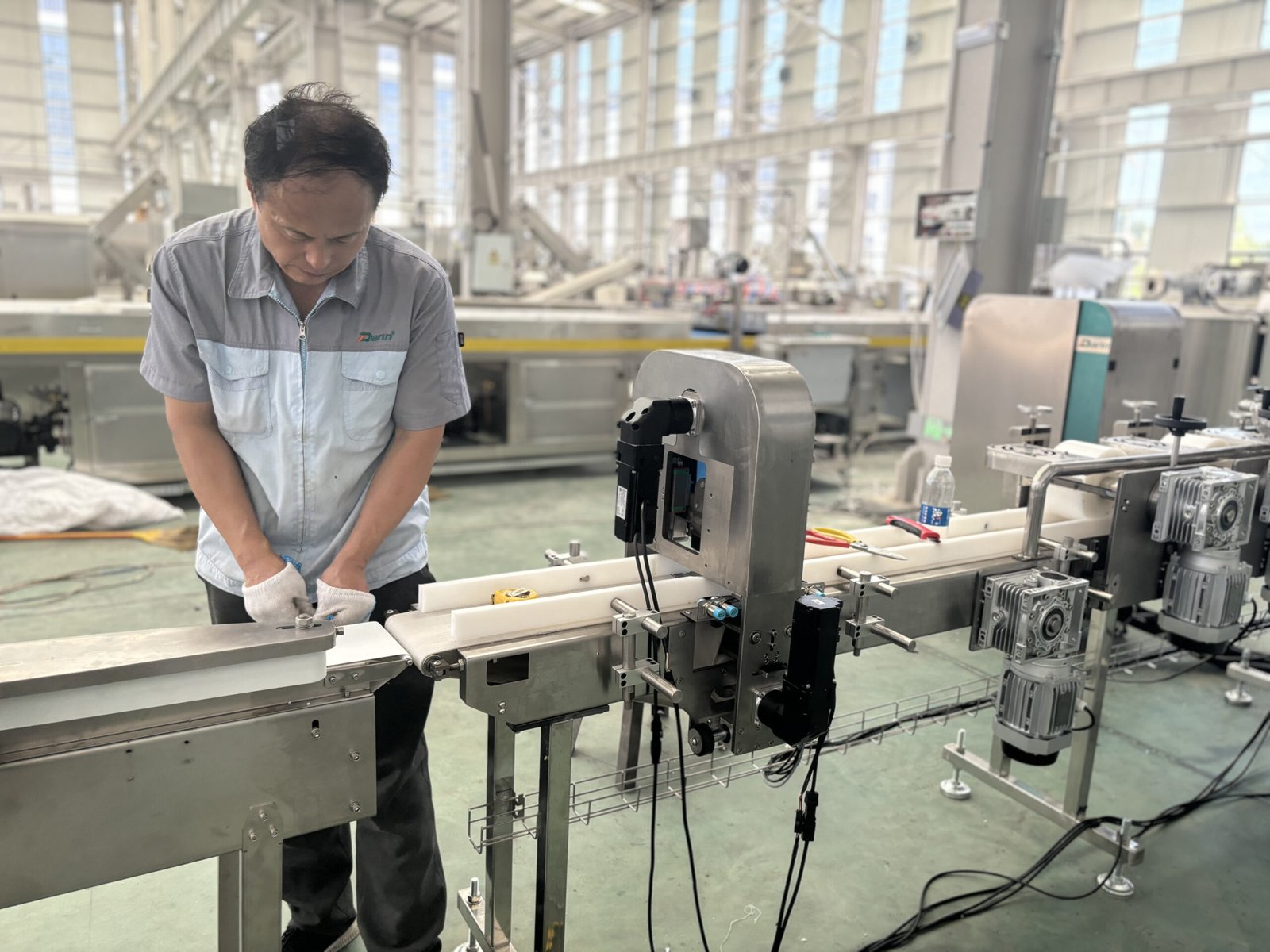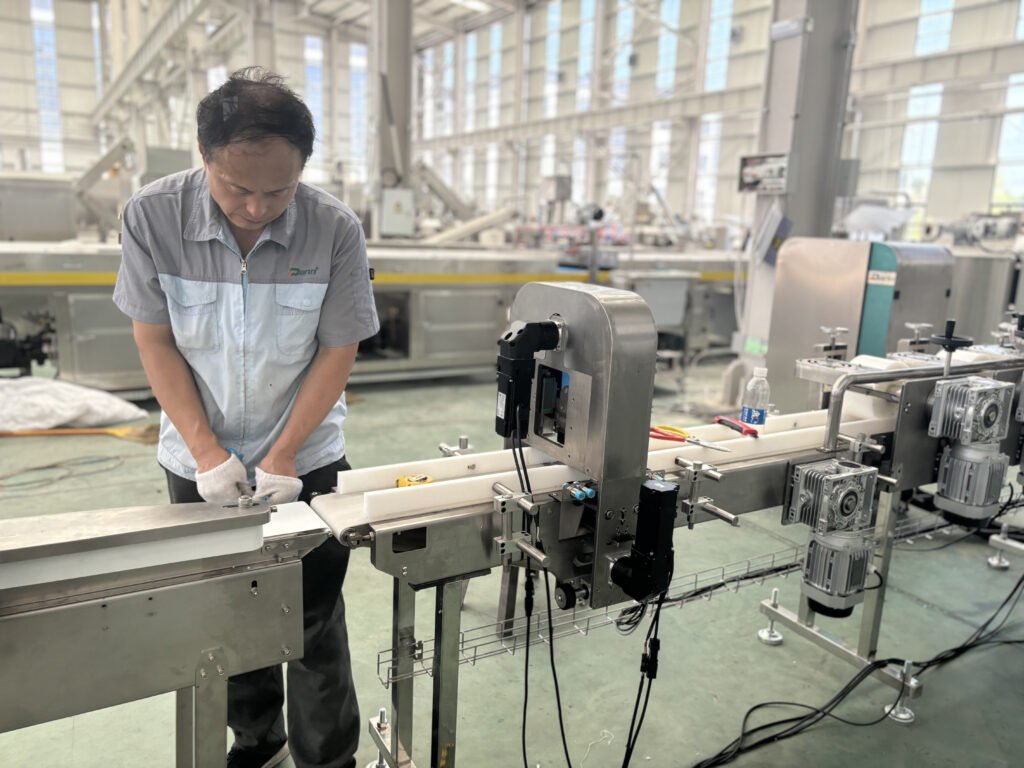
Pet food extrusion equipment is a substantial investment, and its continuous operation is critical to meeting production goals. However, even the most advanced extruder is not immune to wear and tear. Ignoring or delaying routine maintenance can lead to severe problems: reduced product quality, unplanned downtime, contamination risks, and costly repairs. Maintenance is not just about fixing issues—it’s about preventing them. A well-structured maintenance plan ensures reliable performance, extended machine life, and consistent product output. In this article, we’ll explain the expected maintenance requirements for a pet food extruder, including daily, weekly, monthly, and annual routines, plus tips for predictive strategies.
Pet food extruders require daily cleaning and inspection, weekly lubrication of moving parts, monthly screw and barrel wear checks, quarterly replacement of seals and bushings, and annual overhauls including screw/barrel reconditioning. A proactive preventive maintenance plan significantly reduces downtime, maintains food safety, and extends machine life.
Whether you're running a pilot-scale setup or a 10-ton/hour industrial line, proper maintenance isn't optional—it's mission-critical. Let’s dive into the real-world expectations for keeping your extruder running like new.
Pet food extruders require minimal or no maintenance.False
Like all high-performance industrial equipment, pet food extruders require structured, routine maintenance to ensure consistent operation, safety, and longevity.
A Comprehensive Breakdown of Pet Food Extruder Maintenance Requirements
1. Daily Maintenance Tasks
| Task | Why It Matters | Time Required |
|---|---|---|
| External cleaning of hopper, barrel, and die face | Prevents contamination and buildup | 15–30 mins |
| Visual inspection of wear parts (screws, knives, cutters) | Detects early wear or damage | 10 mins |
| Check oil levels (gearbox, hydraulic systems) | Avoids lubrication failures | 5–10 mins |
| Monitor abnormal noise/vibration | Signals misalignment or mechanical fatigue | Real-time |
Tools Needed:
- Clean cloths
- Food-grade disinfectant
- Flashlight
- Inspection mirror
2. Weekly Maintenance Checklist
| Component | Task | Description |
|---|---|---|
| Bearings | Lubricate with food-grade grease | Extends life, reduces friction |
| Screw shaft | Check torque on fasteners | Prevents vibration and wear |
| Electrical panels | Clean dust and inspect for loose wires | Reduces fire and short risks |
| Air and water lines | Inspect for leaks or pressure drops | Ensures temperature consistency |
| Chart: Weekly Lubrication Points on Twin-Screw Extruder |
|---|
 |
3. Monthly Preventive Maintenance
Every month, your maintenance team should focus on wear-intensive components and calibration checks.
| Component | Action Required | Inspection Criteria |
|---|---|---|
| Screws and barrels | Measure wear (diameter reduction) | Replace when >10% worn |
| Cutter blades | Inspect edge sharpness | Regrind or replace if dull |
| Preconditioner paddles | Check alignment and torque | Avoid inconsistent mixing |
| Temperature sensors | Calibrate using external thermometer | Ensure thermal accuracy |
| Safety interlocks | Test emergency stop, door sensors | OSHA/HACCP compliance |
Recommended Tools:
- Calipers and micrometers
- Hardness testers
- Calibration thermometers
- Inspection logs (digital or paper)
4. Quarterly Maintenance Schedule
Quarterly inspections are more invasive and proactive, helping detect hidden fatigue and plan for part replacements.
| Component | Service/Check | Service Notes |
|---|---|---|
| Seals and bushings | Replace if degraded or leaking | Prevents oil or feed leakage |
| Gear reducers | Oil replacement and gear inspection | Extend gearbox lifespan |
| Hydraulic systems (if applicable) | Replace filters, check actuators | Smooth cutter or valve operation |
| PLC/Control software | Backup, firmware update, diagnostic log review | Avoid software-related downtime |
5. Annual Overhaul Requirements
Once per year (or after 6,000–8,000 hours of operation), the extruder should be disassembled for deep inspection and overhaul.
| Activity | What It Includes |
|---|---|
| Full screw and barrel teardown | Clean, inspect for fatigue, resurface if needed |
| Screw segment replacement | Replace high-wear segments or all for high-volume use |
| Regrinding die face | Ensure smooth product flow and accurate dimensions |
| Drive shaft alignment check | Avoid imbalance and mechanical vibration |
| Motor and VFD inspection | Prevent performance drops due to wear or electrical drift |
Overhaul Tips:
- Use OEM replacement parts only
- Document all changes and replacements
- Schedule during production downtime to avoid delays
Material Wear and Replacement Intervals (Estimated Lifespan)
| Component | Typical Lifespan (hrs) | Maintenance Note |
|---|---|---|
| Screw segments | 6,000–10,000 | Varies by formulation (grain vs. meat) |
| Barrel liners | 8,000–12,000 | Inspect for scoring, overheating |
| Cutter blades | 2,000–4,000 | Based on kibble size and hardness |
| Bearings & bushings | 4,000–6,000 | Replace preventively before failure |
| Electrical sensors | 3–5 years | Check calibration annually |
6. Predictive Maintenance: Using Technology to Prevent Downtime
Modern extruders support predictive maintenance tools:
- Vibration monitoring systems: Detect early bearing or gearbox issues.
- Infrared thermal sensors: Spot overheating zones.
- PLC integration: Log runtime per part and schedule alerts for service.
- Cloud-based dashboards: Centralized tracking across multiple sites.
Example: A SCADA system alerts the maintenance team when the torque value on screw zone 3 exceeds 10% deviation, prompting inspection before failure.
7. Sample Annual Maintenance Plan
| Month | Action |
|---|---|
| January | Electrical calibration, safety audit |
| March | Cutter blade replacement |
| June | Mid-year performance diagnostics |
| September | Gearbox oil change and drive inspection |
| December | Full extruder disassembly, screw replacement |
Conclusion
The expected maintenance requirements for a pet food extruder are structured, predictable, and essential for continuous production. They range from daily cleaning and inspection to annual mechanical overhauls. By maintaining a comprehensive maintenance plan—including lubrication, part wear monitoring, calibration, and predictive analytics—you can reduce unplanned downtime, maintain food safety compliance, and maximize your machine’s operational lifespan. Whether you're running a pilot line or a high-capacity industrial plant, maintenance is your best investment in consistent performance and profitability.
Need Maintenance Planning Support?
If you're unsure how to set up a preventive maintenance program for your extruder, contact our technical support team today. We offer:
- Custom maintenance schedules
- Spare parts kits with predictive replacement timelines
- On-site or remote maintenance training
Let us help you protect your investment and keep your line running 24/7—get in touch now!
FAQ
Q1: What are the daily maintenance tasks for a pet food extruder?
A1: Daily maintenance includes cleaning the extruder barrel and die, checking for material buildup, inspecting sensors and temperature zones, and verifying lubrication levels. Operators should also check for unusual vibrations, noises, or temperature spikes to prevent unexpected downtime.
Q2: How often should the screws and barrels be inspected?
A2: Screws and barrels should be visually inspected weekly for signs of wear, scoring, or material buildup. In high-capacity or continuous-use systems, detailed inspections may be required biweekly. Excessive wear can reduce product consistency and throughput.
Q3: What are the lubrication and greasing requirements?
A3: Gearboxes, bearings, and moving parts should be lubricated according to the manufacturer’s schedule—typically weekly or biweekly. Always use food-grade lubricants to comply with hygiene standards. Some systems include automatic lubrication systems to simplify this process.
Q4: When should parts be replaced or refurbished?
A4: Wear parts like screws, bushings, seals, and die plates need periodic replacement based on usage hours and wear rate. On average, screw elements may require replacement every 6–12 months depending on the formulation. Maintenance logs help track lifespan and predict replacement cycles.
Q5: Why is a preventive maintenance schedule important?
A5: Preventive maintenance minimizes unplanned downtime, extends equipment lifespan, ensures consistent product quality, and reduces repair costs. A structured schedule helps operators proactively address minor issues before they become major problems.
References
- Pet Food Extruder Maintenance Checklist - https://www.extru-techinc.com/maintenance-checklist - Extru-Tech Inc.
- Best Practices for Extruder Maintenance - https://www.clextral.com/extruder-maintenance/ - Clextral
- Bühler Maintenance Programs for Extruders - https://www.buhlergroup.com/global/en/services/maintenance.htm - Bühler Group
- Feed Equipment Upkeep Guide - https://www.feedstrategy.com/processing-equipment/extruders/ - Feed Strategy
- Troubleshooting & Maintenance Manual - https://www.readingbakery.com - Reading Bakery Systems
- Screw and Barrel Wear Insights - https://www.plastemart.com - Plastemart
- Sanitary Lubricants for Food Equipment - https://www.nsf.org/food-safety/food-grade-lubricants - NSF International
- Predictive Maintenance with Sensors - https://www.automationworld.com - Automation World
- Pet Food Industry Cleaning Procedures - https://www.petfoodindustry.com/articles/8476-equipment-cleaning-and-maintenance-in-pet-food-processing - Pet Food Industry
- Gearbox and Motor Maintenance in Extruders - https://www.nord.com/gb-en/solutions/food-beverage/food-processing.jsp - NORD Drivesystems










